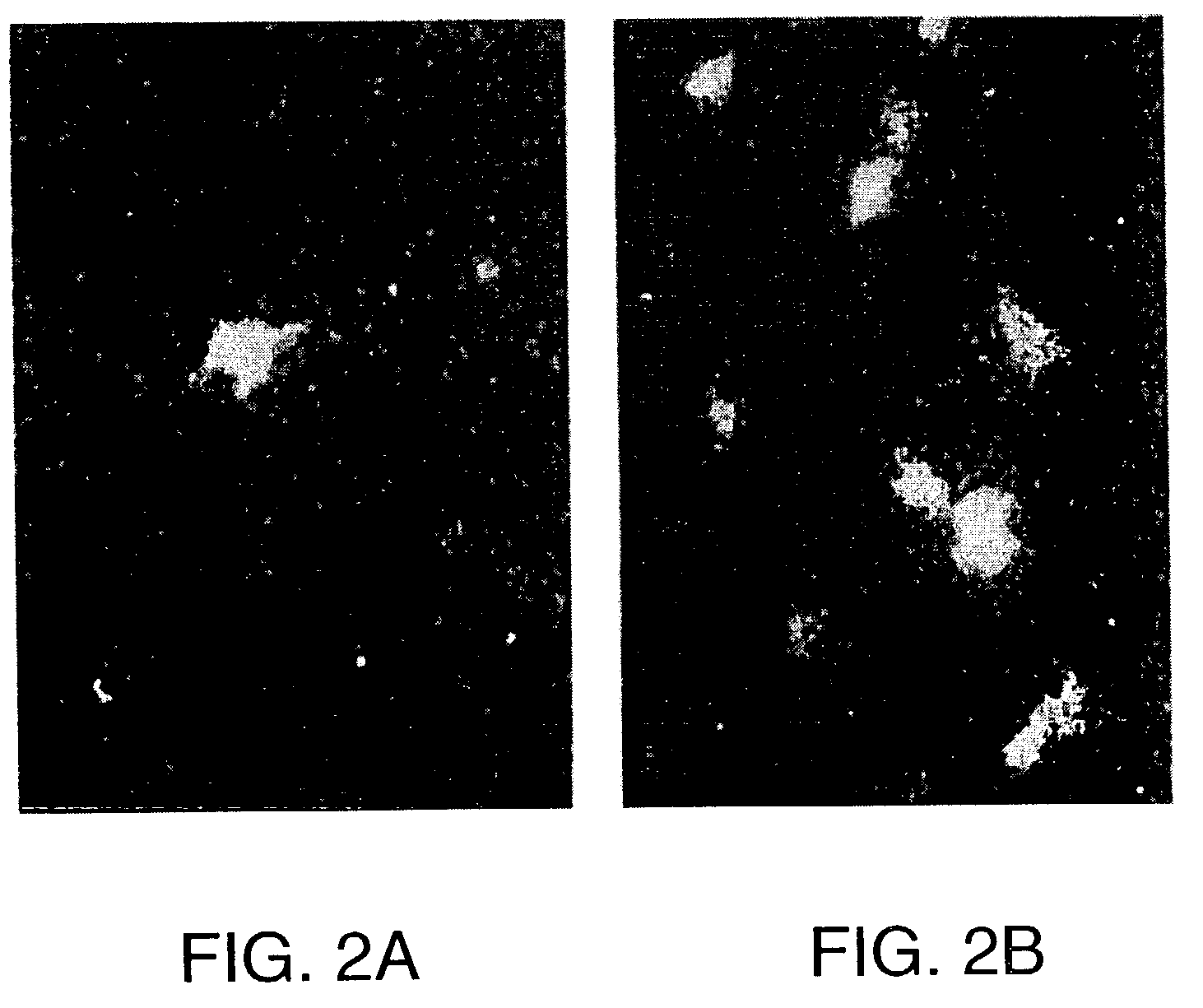Soluble inhibitors of vascular endothelial growth factor and use thereof
a growth factor and vascular endothelial technology, applied in the field of vegf, can solve the problems of tumor growth, excessive or insufficient blood vessel growth, and severe negative consequences of inappropriate angiogenesis, and achieve the effect of reducing vegf165-mediated huvec proliferation
- Summary
- Abstract
- Description
- Claims
- Application Information
AI Technical Summary
Benefits of technology
Problems solved by technology
Method used
Image
Examples
example 1
Experimental Procedures
Materials
[0101]Cell culture media, lipofectin and lipofectamin reagents for transfection were purchased from Life Technologies. Human recombinant VEGF165 and VEGF121 were produced in Sf-21 insect cells infected with recombinant baculovirus vectors encoding either human VEGF165 or VEGF121 as previously described (Cohen et al., Growth Factors, 7, 131-138 (1992); Cohen et al., J. Biol. Chem., 270, 11322-11326 (1995)). GST VEGF exons 7+8 fusion protein was prepared in E. Coli and purified as previously described (Soker et al., J. Biol. Chem., 271, 5761-5767 (1996)). Heparin, hygromycin B and protease inhibitors were purchased from Sigma (St. Louis, Mo.). 125I-Sodium, 32P-dCTP, and GeneScreen-Plus hybridization transfer membrane were purchased from DuPont NEN (Boston, Mass.). Disuccinimidyl suberate (DSS) and IODO-BEADS were purchased from Pierce Chemical Co. (Rockford, Ill.). Con A Sepharose was purchased from Pharmacia LKB Biotechnology Inc. (Piscataway, N.J.). R...
example 2
Construction of sNP-1 and sNP-2
[0132]The cDNAs encoding the soluble forms of neuropilin-1 and neuropilin-2 were cloned from an oligo dT-primed cDNA library which was synthesized from PC3 cell mRNA.
Soluble Neuropilin-1 (sNP-1) cDNA Cloning:
[0133]The sNP-1 cDNA deviates from the full length NP-1 cDNA between the b2 and c domains after amino acid 641, at the position of an exon-exon boundary. The 3′ end of the sNP-1 clone possesses 28 bp of intron sequence, encoding three novel amino acids and a translation stop codon.
[0134]An oligonucleotide (GAAGTATACGGTTGCAAGATA SEQ ID NO: 16) designed from within the b1 domain was used in 3′ RACE (rapid amplification of cDNA ends) to clone the 3′ end of the sNP-1 cDNA. The full length sNP-1 cDNA was subsequently cloned from the PC3 library by RT-PCR using primers at the 5′ (GCGTTCCTCTCGGATCCAGGC SEQ ID NO:17) and 3′ (CAGGTATCAAATAAAATAC SEQ ID NO:18) ends of the sNP-1 open reading frame (ORF). The sNP-1 cDNA was tagged with His and c-myc domains (a...
example 3
Preparation of Soluble NP-1 (Domains AB and C)
[0137]1. The Sequence of NP-1 between the BamHI site (base 100) and the XbaI site (base 4687) was subcloned between the BamHI and XbaI site in pBluscript II KS (+) (Stratagene, La Jola Calif.) to yield pBS-NP1.[0138]2. PCR was performed on NP-1 sequence with the following primers:[0139]Primer 1 (Forward): NdeI site (bold and underlined) at NP-1 base 2200) GGAATTCCATATGGTTTTAACTGTGAA (SEQ ID NO:23)[0140]Primer 2 (Reverse): Outside the transmembrane membrane domain at NP-1 base 2823 including 6 histidine (his-tag) and an XbaI site (bold and underlined) GCTCTAGATTAATGATGATGATGATGATGGGTCTTCAACACATTGCC (SEQ ID NO:24) The PCR DNA product (approx. 600 bp) was digested with NdeI and XbaI and purified from an agarose gel. The plasmid pBS-NP1 was digested with NdeI and XbaI and the large fragment containing the extracellular portion of NP-1 was purified from an agarose gel and was served as the vector. Ligation of the above PCR product and the vec...
PUM
| Property | Measurement | Unit |
|---|---|---|
| turnover time | aaaaa | aaaaa |
| molecular mass | aaaaa | aaaaa |
| concentration | aaaaa | aaaaa |
Abstract
Description
Claims
Application Information
 Login to View More
Login to View More - R&D
- Intellectual Property
- Life Sciences
- Materials
- Tech Scout
- Unparalleled Data Quality
- Higher Quality Content
- 60% Fewer Hallucinations
Browse by: Latest US Patents, China's latest patents, Technical Efficacy Thesaurus, Application Domain, Technology Topic, Popular Technical Reports.
© 2025 PatSnap. All rights reserved.Legal|Privacy policy|Modern Slavery Act Transparency Statement|Sitemap|About US| Contact US: help@patsnap.com



